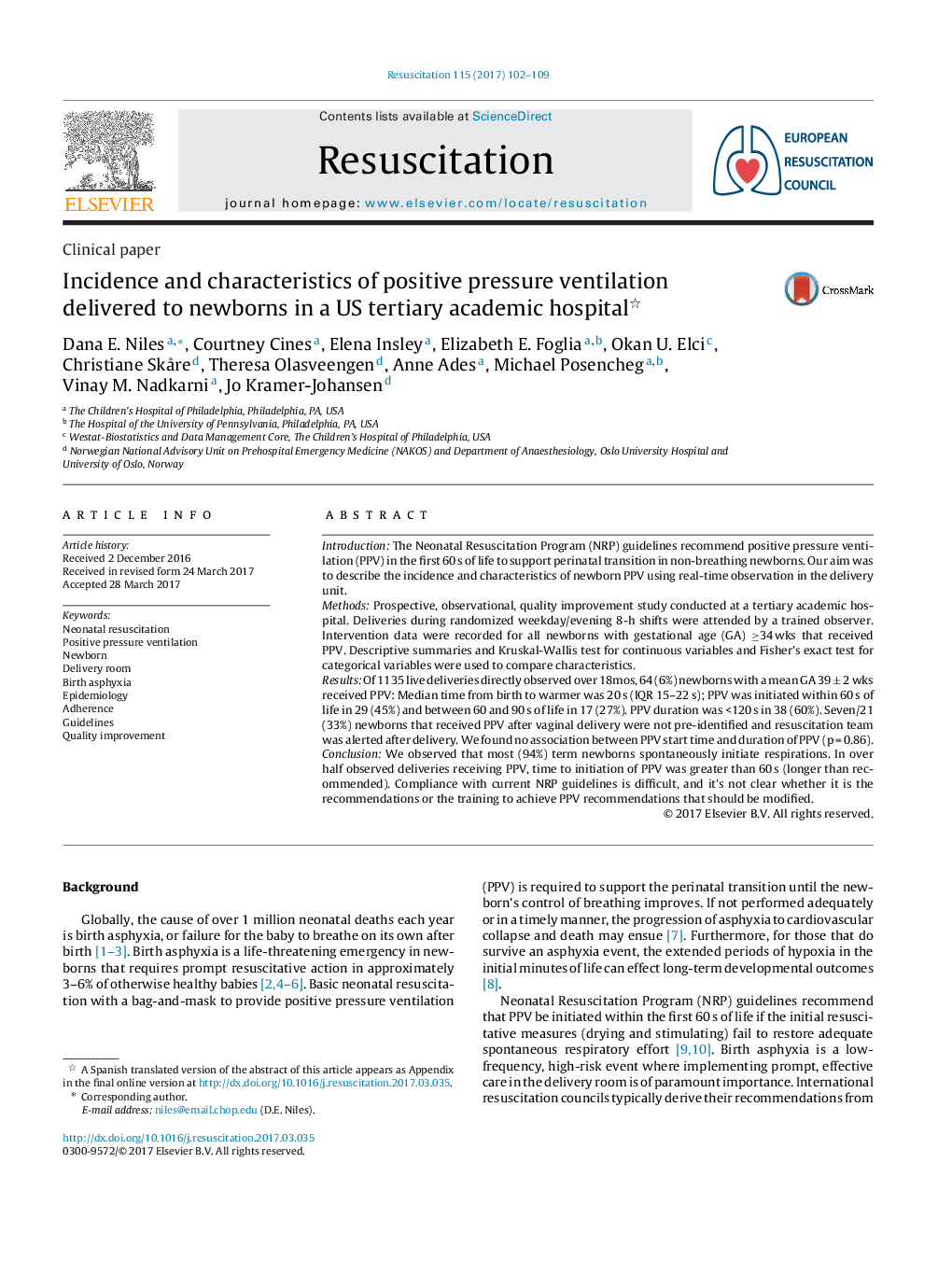| Article ID | Journal | Published Year | Pages | File Type |
|---|---|---|---|---|
| 5620256 | Resuscitation | 2017 | 8 Pages |
IntroductionThe Neonatal Resuscitation Program (NRP) guidelines recommend positive pressure ventilation (PPV) in the first 60 s of life to support perinatal transition in non-breathing newborns. Our aim was to describe the incidence and characteristics of newborn PPV using real-time observation in the delivery unit.MethodsProspective, observational, quality improvement study conducted at a tertiary academic hospital. Deliveries during randomized weekday/evening 8-h shifts were attended by a trained observer. Intervention data were recorded for all newborns with gestational age (GA) â¥34 wks that received PPV. Descriptive summaries and Kruskal-Wallis test for continuous variables and Fisher's exact test for categorical variables were used to compare characteristics.ResultsOf 1135 live deliveries directly observed over 18mos, 64 (6%) newborns with a mean GA 39 ± 2 wks received PPV: Median time from birth to warmer was 20 s (IQR 15-22 s); PPV was initiated within 60 s of life in 29 (45%) and between 60 and 90 s of life in 17 (27%). PPV duration was <120 s in 38 (60%). Seven/21 (33%) newborns that received PPV after vaginal delivery were not pre-identified and resuscitation team was alerted after delivery. We found no association between PPV start time and duration of PPV (p = 0.86).ConclusionWe observed that most (94%) term newborns spontaneously initiate respirations. In over half observed deliveries receiving PPV, time to initiation of PPV was greater than 60 s (longer than recommended). Compliance with current NRP guidelines is difficult, and it's not clear whether it is the recommendations or the training to achieve PPV recommendations that should be modified.
